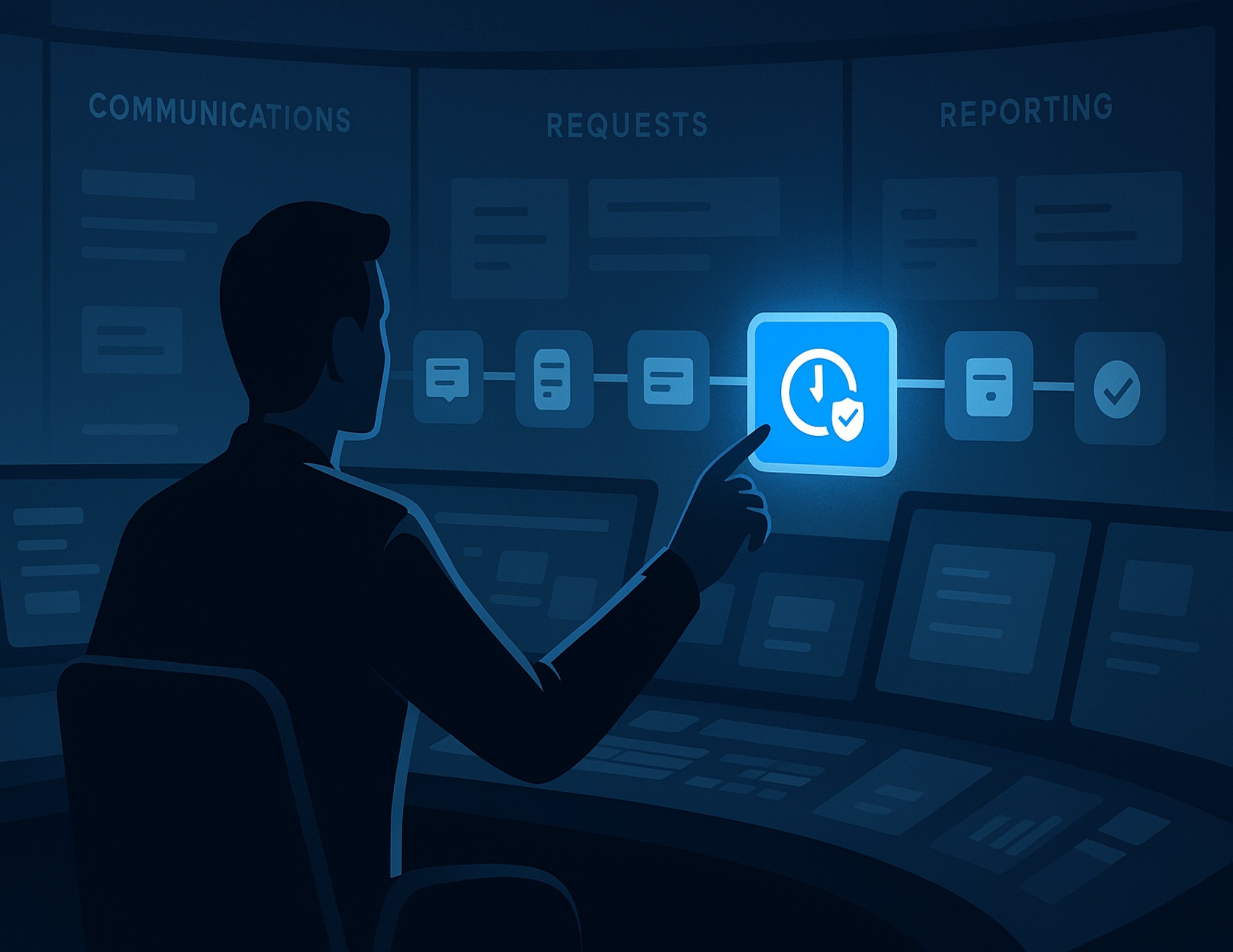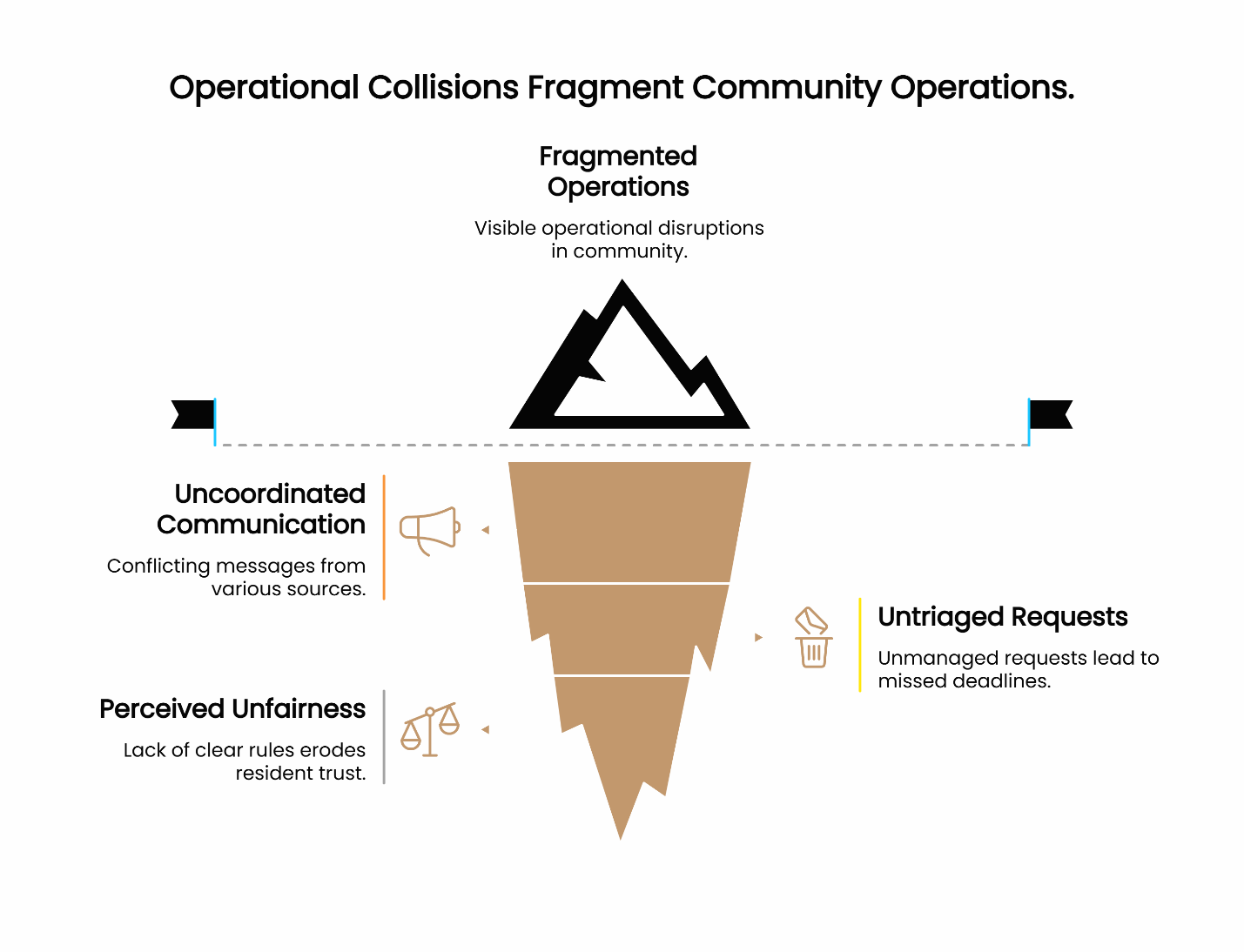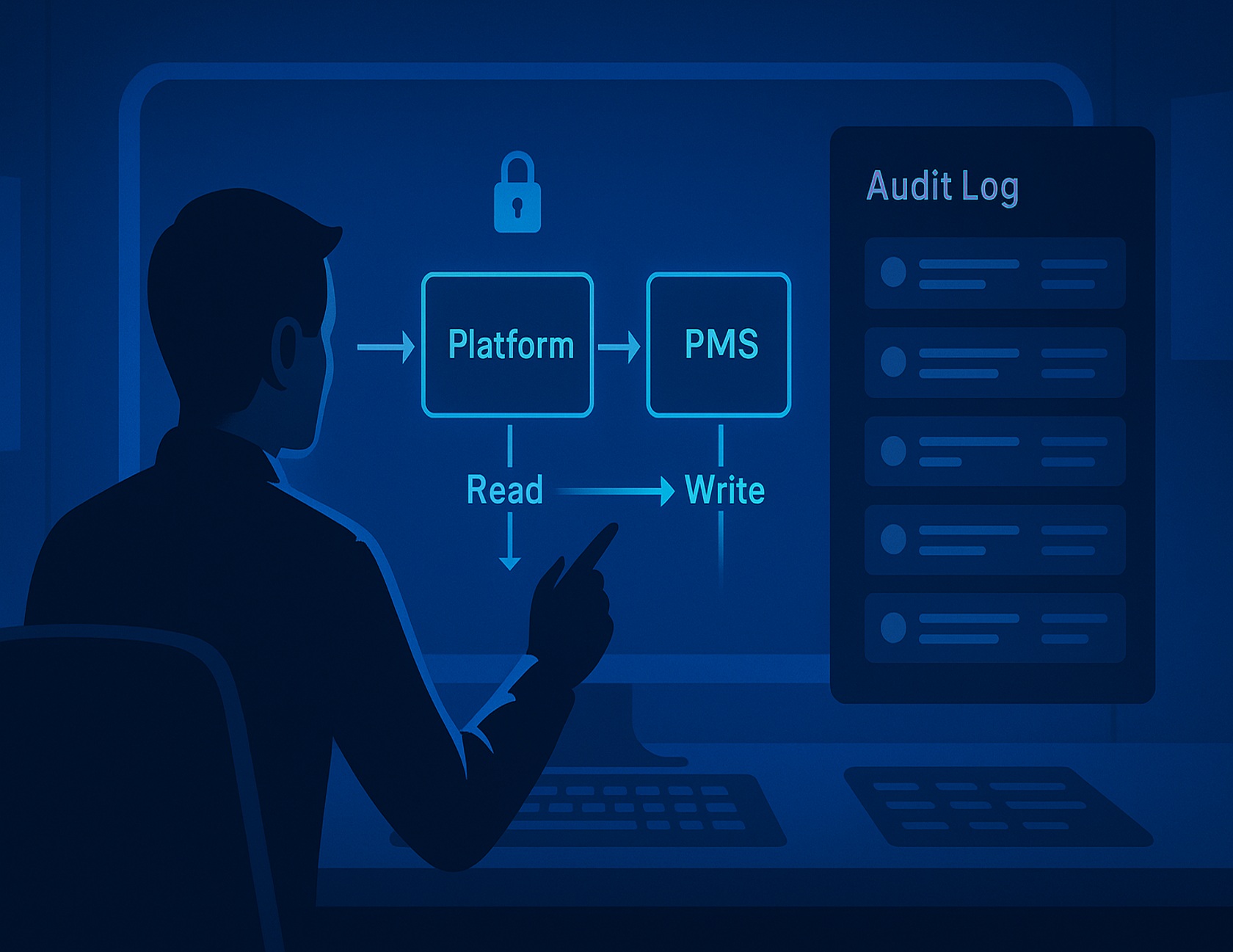
📌 Key Takeaways
Peak-period chaos stems from fragmented systems that create three predictable collision patterns: duplicate broadcasts confusing residents, untriaged requests missing SLAs, and unfair amenity access disputes.
Governance Beats Apps: An Operations Control Room functions as a policy layer across all channels rather than another resident app, centralizing communications, requests, amenity rules, and reporting under clear roles and SLAs.
Single Intake Prevents Chaos: Unified request handling with role-based queues and SLA timers eliminates the ownership confusion that causes urgent issues to languish in fragmented systems.
SSO Reduces Risk: Identity provider-backed single sign-on with role-based access control cuts credential sprawl while strengthening security across multiple property management systems.
Pilot First Strategy: Start with one building, read-only PMS integration, and weekly governance reviews to build momentum before rolling out portfolio-wide changes.
Transparency Creates Trust: Policy-backed amenity rules with audit trails enable fair conflict resolution and eliminate the perception that access depends on who complains loudest.
Unified governance transforms peak-period stress into coordinated response.
For Property Management Teams at Class A communities evaluating resident experience platforms to reduce operational chaos and improve resident satisfaction during high-demand periods.
The "Operations Control Room" is a resident-facing operating layer that unifies communications, requests, amenity/access, and reporting in one governed surface. By enforcing roles, policies, and SLAs—and by integrating with PMS/SSO—it reduces duplicate messages, missed hand-offs, and fairness conflicts during peaks like move-ins and holidays.
What the Operations Control Room Model Is

An Operations Control Room is not a single "resident app." It functions as a governance layer across broadcasts, SMS, in-app communications, service requests, amenity and access rules, and reporting. The Property Management Team uses it to centralize policy, define roles, and measure outcomes across one Community or a portfolio of Class A Communities.
From a security and access perspective, widely accepted best practice anchors identity and permissions in an identity provider with single sign-on and role-based access control. The NIST Digital Identity Guidelines explain how federation and strong authentication reduce credential risk and administrative overhead for organizations that rely on multiple systems.
This approach differs fundamentally from traditional Property Manager Software implementations that handle individual functions separately. The control room model creates an integrated operations environment where teams work from unified dashboards with consistent data, residents experience coordinated communications, and managers gain portfolio-wide visibility into performance metrics.
Why Peaks Break: Three Collision Patterns

Peak periods expose fundamental collision patterns that fragment operations and frustrate residents.
Duplicate Broadcasts
During move-ins, outages, or holiday amenity rushes, uncoordinated messages collide—different timing, tone, and audiences—confusing Residents and spiking follow-ups. The pool manager sends one update, the front desk another, and maintenance a third. Each believes they're being helpful, but residents experience chaos.
Untriaged Requests and Missed SLAs
Fragmented intake through email, phone, and lobby conversations obscures ownership. Without a single queue and timers, urgent items languish and escalation paths remain unclear. A maintenance request submitted via email might sit unnoticed while the team focuses on app-based submissions.
Amenity and Access Fairness Conflicts
When rules precedence and auditability are weak, Residents perceive "first come, first served" as arbitrary. That perception erodes trust, especially during high-demand windows. Without policy-backed systems and audit trails, resolving conflicts becomes subjective rather than data-driven.
Consider a weekend elevator outage hitting a high-rise Community. Messages go out from three channels with different instructions, requests flood multiple inboxes, and the gym's booking fills through word-of-mouth rather than policy. Monday begins with apologies and back-tracking instead of resolution work.
Control Room Checklist: 5 Essential Components
These components reflect widely adopted operating principles and specific requirements for effective governance:
1. Governed Communications Console
- Templates, segmentation, and approvals
- Integrated SMS/email/in-app with auditable change log
- Early, consistent updates reduce duplicative follow-ups
For broader platform context, see our overview of Multifamily Property Management Software.
2. Requests & Triage with SLA Timers
- Single intake across channels with role-based queues and SLA clocks
- Escalation runbooks embedded in the workflow
- Industry practice shows maintained runbooks and actionable dashboards shorten time-to-resolution in operations contexts, as demonstrated in research from USENIX on runbooks and dashboards
For maintenance-specific implementation guidance, see Maintenance Made Easy.
3. Policy-Backed Amenity & Access
- Rules precedence for when two rules collide, blackout windows, fair-use caps
- Transparent audit logs for quick dispute review
- Practical amenity performance indicators are detailed in Measuring Amenity Success: Key Metrics for Property Managers
4. Roles, Permissions & SSO
- IdP-backed SSO with RBAC by building/role and least-privilege defaults
- Aligns with established digital identity practices to reduce credential sprawl
5. Reporting & Variance Dashboards
- SLA attainment, backlog age, amenity utilization, fairness exceptions
- Portfolio and building-level views to spot outliers and coach teams
For related process optimization, see Automating Lease Renewals.
How the Model Reduces Peak-Period Chaos
Central Coordination Lowers Collisions
Incident management frameworks emphasize integrated communications and unified command to reduce duplicative work under pressure—principles that translate directly to building-level operations. Public guidance on the Incident Command System consistently highlights the value of a single coordination surface for clarity and speed.
Runbooks Shorten Time-to-Resolution
When escalation paths and actions are written, current, and embedded, teams avoid ad-hoc decision-making during stressful moments. Practitioner research in site reliability and operations points to runbooks and dashboards as tools that reduce mean time to resolve when used consistently.
Portfolio Visibility Improves Fairness
A single surface for bookings and access—with audit trails—enables consistent enforcement and faster conflict review across Communities. This represents a governance effect rather than a software feature: clear policy plus transparent data leads to higher perceived fairness.
Pilot First, Then Scale
A focused pilot creates momentum without forcing risky, portfolio-wide changes. This approach combines verified implementation strategies with widely accepted change-management practices.
Single-Building Pilot Scope
Start with one building, integrate SSO, and begin with read-only PMS connections. Establish weekly governance cadences for policy reviews, queue hygiene, and message templates. This approach follows proven change management principles. Established research demonstrates how pilots and small wins build organizational momentum while reducing resistance to larger changes.
Success Metrics and Guardrails
Track SLA attainment for on-time triage and resolution, broadcast read-rates to ensure residents see updates, escalation volume, and amenity conflict resolution time. Emphasize small wins to build credibility and reduce perceived risk. Keep runbooks current and retire side channels during the pilot window so data reflects reality.
Start with least-privilege access and progressively add write-backs only where value is clear and risk is low. This aligns with digital identity guidance for secure, gradual integration.
When the pilot demonstrates value, expand to a building cluster, then portfolio. Teams exploring tools can see a 3-minute product tour to align stakeholders on scope and language.
Business Impact Considerations
Cost avoidance comes from fewer escalations and less rework when communications and requests follow governed paths. Risk reduction results from SSO and RBAC decreasing credential sprawl and reducing manual account handling. Property Rental Management Software implementations that follow these principles typically see improved operational consistency.
For vendor due diligence, public directory profiles such as Better Business Bureau listings can support transparency requirements during procurement processes.
Frequently Asked Questions
How is a Resident Experience Platform different from a "resident app"?
A Resident Experience Platform functions as an operating layer that unifies communications, requests, amenity/access, and reporting under roles and SLAs. A standalone app typically addresses just one channel or feature.
Do we have to replace our PMS?
No replacement is necessary. A common, low-risk starting point involves SSO and read-only integrations. Add write-backs only where risk is low and value is clear, consistent with identity and access control guidance.
What SLAs matter during peaks?
Consider these practical guardrails: urgent requests triaged in under 15 minutes, non-urgent same-day, amenity access conflicts resolved within one hour, broadcast updates within 30 minutes of a change. Adjust these timeframes to match your Community's specific policy and capabilities.
How long should a pilot run?
Eight to twelve weeks typically captures at least one peak period while allowing sufficient time for process refinement. Define success based on SLA attainment, read-rates, and reduction in escalations requiring management intervention.
What about equity and language access?
Use templates, translations, and audit trails so every Resident receives the same essential information and amenity opportunities. This operational policy choice should be enabled by the platform rather than substituted by it.
Ready to explore implementation strategies? Contact the Property Management Team to discuss how an Operations Control Room model might work in your Community.
Our Editorial Process:
We follow an evidence-first editorial standard: (a) we cite authoritative sources (standards bodies, .gov/.edu, and peer-reviewed/recognized publications), (b) subject-matter reviewers check technical accuracy and fairness, and (c) we periodically refresh articles to keep guidance current with policy and standards updates.
Author Byline & Bio:
The ElevateOS Insights Team. We partner with Property Management Teams to improve resident-facing operations in Class A Communities through technology and governed workflows. Learn more about ElevateOS.

.avif)


